
Findings may help providers and patients with head and neck cancer consider whether to proceed with radiotherapy modalities, such as proton therapy or IMRT.

Your AI-Trained Oncology Knowledge Connection!


Findings may help providers and patients with head and neck cancer consider whether to proceed with radiotherapy modalities, such as proton therapy or IMRT.

Raymond B. Mailhot, MD, MPH, discussed methods for comparing academic performances of patients following radiation therapy with healthy control groups.

Panelists discuss how they implement prophylactic strategies for treatment-related adverse events in the MARIPOSA study and how they counsel patients about managing these effects.
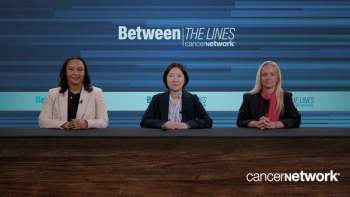
Panelists discuss the clinical implications of the SKIPPirr trial data presented at the 2024 World Congress on Lung Cancer, including whether it might reduce resistance to using this combination in practice, how to implement supportive measures such as prophylactic dexamethasone 8 mg, potential barriers to implementation, strategies to overcome these barriers, and ways to educate patients about infusion-related reactions and the benefits of prophylactic measures.

Study results appear to affirm anecdotal information from patients with head and neck cancer related to taste changes during and after radiotherapy.

Noah S. Kalman, MD, MBA, describes the rationale for using a test to measure granular details of taste change in patients undergoing radiotherapy for HNC.

No evidence indicates synergistic toxicity when combining radiation with CAR T-cell therapy in this population, according to Timothy Robinson, MD, PhD.

The addition of radiotherapy to CAR T-cell therapy may particularly benefit patients with localized disease, according to Timothy Robinson, MD, PhD.

Timothy Robinson, MD, PhD, discusses how radiation may play a role as bridging therapy to CAR T-cell therapy for patients with relapsed/refractory DLBCL.
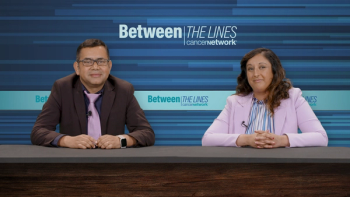
Panelists discuss how chimeric antigen receptor (CAR) -T-cell therapy has transformed the treatment landscape for relapsed/refractory multiple myeloma (R/R MM), demonstrating remarkable efficacy and offering new hope for patients with limited therapeutic options.

Panelists discuss how GPRC5D-targeted bispecifics are likely to be incorporated earlier in treatment sequencing for multiple myeloma in the future, while considering factors such as optimal timing, potential combinations with other therapies, sequencing strategies, and possible drug interactions when integrating these treatments into the overall management of relapsed/refractory multiple myeloma patients.

Panelists discuss how multiple myeloma care faces challenges including patient reluctance to seek treatment at academic centers, complex treatment landscapes, and the need for improved coordination between community and academic physicians.

Experts on multiple myeloma address the intricacies of adverse event management practices, focusing on taste changes and associated weight loss.

Panelists discuss how specific biomarkers, such as GPRC5D expression levels, and clinical features, influence their decision to initiate GPRC5D bispecific therapies in multiple myeloma patients.

The panel discusses how they approach treatment selection and sequencing for patients with relapsed/refractory multiple myeloma.

Samantha Shenoy, NP, MSN, presents the case of a patient with multiple myeloma and the panel discusses adverse event management practices.

Shaji Kumar, MD, presents the case of a 70-year-old patient with relapsed/refractory multiple myeloma who received CAR T-cell therapy.

Panelists discuss how collaborative care settings for multiple myeloma patients often lead to improved outcomes compared to non-collaborative approaches, citing factors such as access to specialized expertise, coordinated treatment plans, and comprehensive patient support.
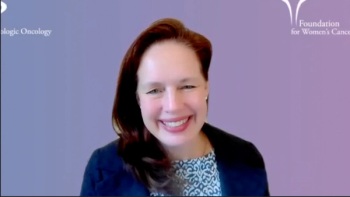
The Foundation for Women’s Cancer provides multicultural resources for patients with gynecologic cancers to help address gaps in care.

Ginger J. Gardner, MD, FACOG, addresses the growing uterine cancer cases among patients in the United States and the need for greater genetic testing.
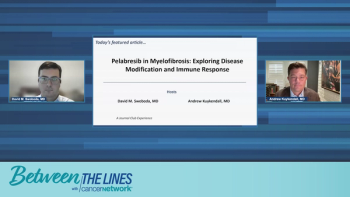
Panelists discuss the immune profiles of responders vs non-responders to pelabresib in myeloproliferative neoplasms (MPNs).

Ginger J. Gardner, MD, FACOG, discussed the state of gynecologic cancers and her role in empowering research, education, and awareness surrounding them.

James Ninia, MD, discussed a phase 2/3 trial seeking to answer whether complete consolidation offers more benefit than incomplete consolidation in SCLC.

Overall survival benefit was significant with complete vs incomplete consolidation therapy, but lost significance when stratified by disease burden.

James Ninia, MD, discussed treatment options for patients with extensive-stage small cell lung cancer undergoing metastasis-directed radiotherapy.

Panelists discuss how the MARIPOSA study shows more patients in the amivantamab-lazertinib arm continued treatment compared to osimertinib, and many who progressed initiated subsequent therapy, primarily with carboplatin-pemetrexed.

Panelists discuss the frequency, timing, and symptoms of infusion-related reactions with amivantamab plus lazertinib, how these drugs compare with other treatments such as datopotamab deruxtecan (DXd) or patritumab DXd (HER3-DXd), and the management strategies and prophylactic measures used, especially for patients with EGFR exon 19 or L858R advanced/metastatic non–small cell lung cancer who have experienced progression on prior therapies.
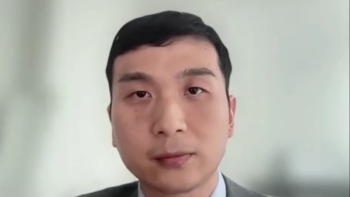
Whole or accelerated partial breast ultra-hypofractionated radiation in older patients with early breast cancer may reduce recurrence with low toxicity.

Ultra-hypofractionated radiation in those 65 years or older with early breast cancer yielded no ipsilateral recurrence after a 10-month follow-up.

The unclear role of hypofractionated radiation in older patients with early breast cancer in prior trials incentivized research for this group.